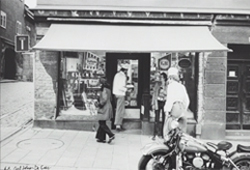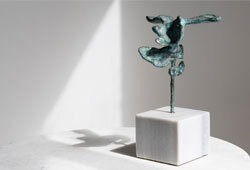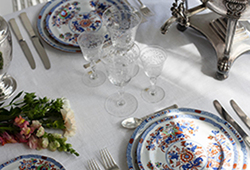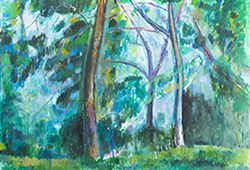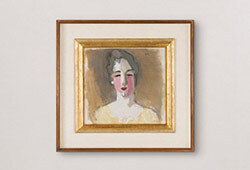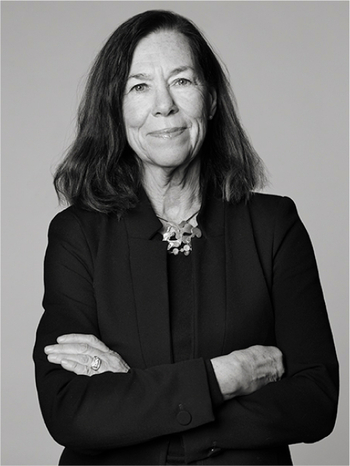Dagobert Peche
a lacquered and gilded mirror executed by frame maker Max Welz, Vienna for the Wiener Werkstätte, Austria ca 1922.
Richly carved lime wood, gilded and lacquered in an eggshell colour, the reverse with remnants of labels and indistinct markings in ink. 53 x 43 cm.
Peche's drawing for this model of mirror is dated 1922 and is in the MAK's archives.
Minor wear and repairs.
Provenance
Property of a Swedish Collector
Exhibitions
The model was exhibited at the World's Fair in Paris in 1925.
Literature
MAK (Museum für Angewandte Kunst) Vienna, Wiener-Werkstätte-Archiv, model no. WW 16, design drawing WWE 108, WWMB 57/1416;
L'Autriche á exposition internationale des arts décoratifs et industriels modernes Paris 1925, exhibition catalogue, Wien 1925, ill.
Peter Noever (ed.), "Dagobert Peche and the Wiener Werkstätte", exhibition catalogue, Neue Galerie New York, New Haven/London 2002, no. 54, p. 237.
This model is also represented in the Neue Galeries' Collection.
Dagobert Peche used this model of mirror in the interior of Wolko Gartenberg's apartment in Vienna early 1920s.
More information
Max Welz was an Austrian frame maker acive in Vienna. The company was founded by Max Welz's father Johann in 1870 and then taken over by his son Max (Maximilian) in 1890. Max Welz was a trained sculptor and gilder. He became a member of the Österreichischer Werkbund and came to execute work for, among others, Josef Hoffmann and Dagobert Peche for the Wiener Werkstätte.
Bukowskis wishes to thank Dr. Anne-Katrin Rossberg of MAK (Museum für Angewandte Kunst) for valuable insights during the cataloguing of this item.
Designer
Dagobert Peche was an Austrian architect and artist. He began his education in 1906 at the "Technische Hochschule" (Technical College) in Vienna. In 1908, he moved to the "Akademie der bildenden Künste" also in Vienna (Academy of Fine Arts). Peche undertook a study trip to Great Britain in 1910. It is believed that he discovered the British artist and graphic designer Aubrey Beardsley during this time, as Peche's early works bear a strong resemblance to Beardsley's style.
Peche's illustrations were published in the magazine "Der architect" between 1909 and 1911. During this period, he also met his future wife, whom he married in 1910, the same year he graduated from the academy.
Peche met Josef Hoffmann at a birthday celebration for Otto Wagner. The meeting resulted in Peche beginning to supply Wiener Werkstätte with various designs. These included sketches and drawings for wallpapers, textiles, glass, ceramics, jewellery, and toys. Peche became increasingly involved with Wiener Werkstätte and simultaneously provided designs to other companies, such as Johann Backhausen, & Söhne, Vereinigte Wiener & Gmundner Keramik, Oskar Dietrich, J. Soulek and Max Schmidt and Flammersheim & Steinmann.
In the spring of 1915, Dagobert Peche was appointed the artistic director of Wiener Werkstätte. In 1917, Peche moved with his family to Zurich and led Wiener Werkstätte from there until they returned to Vienna after the end of the war in 1919.
Peche died in 1923 from a brain tumour. After Peche's death, Hoffmann is said to have remarked that Dagobert Peche was the greatest genius in ornamentation that Austria had produced since the Baroque period.
Josef Hoffmann can be said to be the one who put his mark on the early slightly stricter designs at Wiener Werkstätte, Dagobert Peche's more frivolous design language is what characterized the WW of the 1910s-1920s.
Read more





